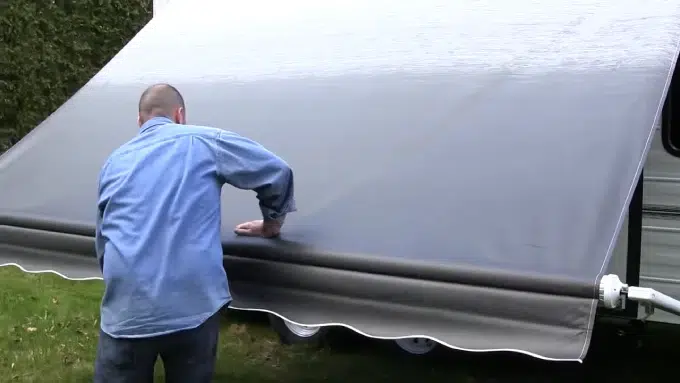Last Updated on April 14, 2023
As an RV owner, discovering wrinkles on your awning fabric can be frustrating and concerning. Not only do they take away from the overall appearance of your RV, they can also lead to structural damage and safety hazards if left untreated.
For the long-term well-being of your RV, it is essential to understand the causes, such as lack of tension, age, and exposure to elements, as well as how to prevent and fix awning fabric wrinkles.
Various factors cause awning fabric to wrinkle on RVs, and we will explore preventative and fixing strategies in this blog post. By the end, you’ll have a comprehensive understanding of how to keep your RV’s awning looking its best and functioning safely for years.
Why Does My Awning Fabric Wrinkle On RV: Causes
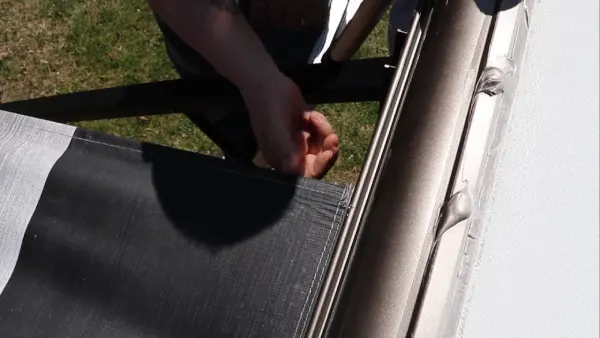
Awning fabric wrinkles on an RV can be an unsightly blemish that detracts from the overall appearance of your vehicle. Understanding the causes of these wrinkles can help you prevent them from occurring and keep your RV looking great for years to come.
Lack of Tension
Proper tension is essential for maintaining the integrity of your RV’s awning fabric. If you notice wrinkles on your awning, it could be due to a lack of tension. Over time, the fabric can stretch and sag, causing wrinkles to form.
When the awning fabric is not taut enough, it can cause water to pool on top of the fabric. This added weight could stress the material unnecessarily and lead to further sagging and wrinkling.
Additionally, wind can catch in loose fabric and cause flapping, damaging the awning frame and even detaching it from your RV.
Age and Exposure to Elements
Various factors, including age and exposure to the elements, can cause awning fabric wrinkles on RV. Over time, the sun’s UV rays and harsh weather conditions can break down the fibers in the fabric, causing it to weaken and lose its elasticity.
This leads to sagging and wrinkling, which not only looks unsightly but can also cause structural damage to your RV.
Improper Storage
Improper Storage of your RV awning can lead to wrinkles in the fabric. This is because when the awning is not stored properly, it can become creased or folded in ways that cause permanent damage to the material.
Poor Installation
Poor Installation is one of the main causes of awning fabric wrinkles on RVs. This can result from improper installation, incorrect measurements, or using substandard materials during installation.
Effects of Awning Fabric Wrinkles on RV
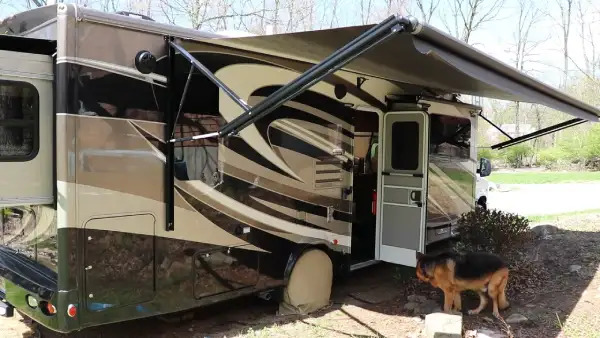
Awning fabric wrinkles on RVs can significantly impact your vehicle’s overall appearance and structure. Here are some of the effects that you may encounter if you don’t address this issue:
Reduced Aesthetic Appeal
Wrinkled RV awning fabric is more than just an eyesore. They can also indicate structural damage and safety hazards and reduce the resale value of your vehicle. But one of the most immediate effects of awning fabric wrinkles is reduced aesthetic appeal.
Wrinkles in your awning fabric can make your RV look old and unkempt. It can detract from your vehicle’s overall appearance and make it less inviting to use or show off to others. This is especially true if you’re someone who takes pride in maintaining the appearance of their RV.
Structural Damage
Awning fabric wrinkles on RVs can cause more than just an unsightly appearance. Over time, these wrinkles can lead to structural damage that can compromise the integrity of your RV.
The constant flapping and movement of loose awning fabric can cause stress on the attachment points, leading to tears or holes in the material. This can also cause damage to the arms and hardware that support the awning, making it difficult or impossible to retract.
Furthermore, wrinkles in your awning fabric can also create safety hazards for you and your family. Loose fabric flapping in the wind could become a tripping hazard, while damaged hardware could fail during use and cause injury.
Lastly, if you plan on selling your RV in the future, having structural damage caused by awning fabric wrinkles could significantly reduce its resale value. Potential buyers may see it as a sign of neglect or poor maintenance.
Safety Hazards
Awning fabric wrinkles on an RV may not seem like a serious issue, but they can actually pose safety hazards. When the fabric is wrinkled, it can create pockets where rainwater can accumulate and cause damage to the RV’s structure. Additionally, if the awning is not taut and secure, strong winds can catch it and cause the entire structure to collapse.
Reduced Resale Value
When it comes to owning an RV, many factors can affect its resale value. One of these factors is the condition of the awning fabric. If the awning fabric on your RV has wrinkles, it could significantly reduce its resale value.
Wrinkles in awning fabric are not only unsightly but also indicate that there may be underlying issues with the structure of the RV. For example, if the fabric is wrinkled due to improper tension or poor installation, it could cause structural damage to the RV over time. This could lead to safety hazards and costly repairs.
Furthermore, a wrinkled awning can also reduce the aesthetic appeal of your RV. Potential buyers may see this as a sign of neglect and assume that other parts of the RV have not been well-maintained either.
Preventing Awning Fabric Wrinkles on RV
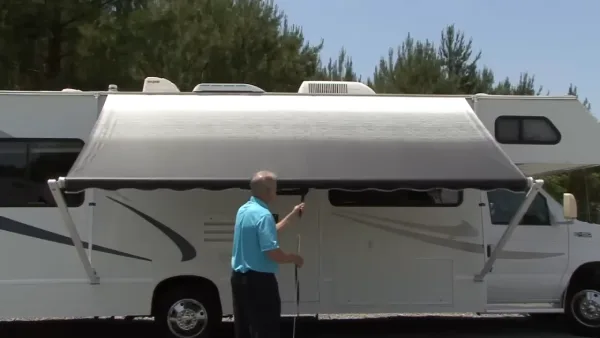
Maintaining proper tension on your RV’s awning fabric is crucial to preventing wrinkles. When the awning is not taut, it can sag and create folds that eventually become permanent wrinkles.
Age and exposure to the elements can exacerbate this issue, weakening the fabric and making it more susceptible to wrinkling.
Maintain Proper Tension
When the awning fabric is not stretched tightly enough, it can sag and create wrinkles. This can happen when the awning is initially installed or over time as the fabric stretches with use.
To prevent this, it’s important to maintain the awning’s fabric tension properly. This can be done by adjusting the tension knobs or using a ratchet system to tighten the fabric. It’s also important to check the tension regularly and make adjustments as necessary.
Proper tension helps prevent wrinkles and ensures that your awning is stable and secure during windy conditions. A loose awning can flap in the wind and potentially cause damage to your RV or nearby objects.
In addition to maintaining proper tension, regular cleaning and maintenance of your awning can help prolong its lifespan and prevent damage. It’s recommended to clean your awning at least once a year with mild soap and water and to inspect it for any signs of wear or tear.
Store Correctly During Off-seasons
Storing your RV awning fabric correctly during off-season prevents wrinkles and other damages. Improper storage can lead to creases and folds that can be difficult to remove, even with regular cleaning and maintenance.
To store your awning fabric correctly, ensure it is completely dry before storing it. Any moisture on the fabric can lead to mold growth, further damaging the material.
Once dry, roll up the awning fabric tightly and secure it with straps or bungee cords. Avoid folding the fabric, as this can create permanent creases.
When choosing a storage location, opt for a cool and dry area away from direct sunlight. Exposure to UV rays can cause fading and weaken the material over time. If possible, store the awning fabric indoors or under a covered area.
Regularly inspect stored awning fabrics for signs of damage or wear. If you notice any tears or holes, have them repaired promptly to prevent further damage.
Regular Cleaning and Maintenance
Regular cleaning and maintenance of your RV’s awning fabric is essential to prevent wrinkles and ensure its longevity.
As you use your RV, dirt, debris, and other contaminants can accumulate on the awning fabric, leading to discoloration and damage if left unaddressed. Therefore, regular cleaning is necessary to keep the fabric in good condition.
To clean your RV’s awning fabric, you will need a few basic supplies, such as a soft-bristled brush or sponge, mild soap or detergent, and water. Begin by extending the awning fully to expose the entire surface area. Next, use a hose to rinse off any loose debris from the fabric.
After rinsing off any loose debris, apply a mild soap or detergent solution to the fabric using a soft-bristled brush or sponge. Gently scrub the surface of the fabric in a circular motion until all visible dirt and stains have been removed. Be sure not to scrub too hard, as this may damage the material.
Once you have finished scrubbing the entire surface of the awning fabric, rinse it thoroughly with clean water until all soap residue has been removed. Allow it to air dry completely before retracting it. Avoid folding or rolling up the awning while it is still wet, as this can lead to mold growth and further damage.
Professional Installation and Repair
For awning fabric wrinkles on RV, seeking professional installation and repair services is crucial. Awnings are essential for providing shade and protection from the elements, but improper installation or repair can lead to a host of problems.
Professional installers have the expertise and tools to properly install or repair your awning, ensuring it is secure and free from wrinkles. They can also provide valuable advice on maintenance and care to keep your awning in top condition.
In addition, professional repair services can quickly fix any issues with your awning fabric, such as tears or holes, preventing further damage and prolonging the life of your awning. Attempting to repair yourself can often result in further damage or even safety hazards.
Fixing Awning Fabric Wrinkles on RV
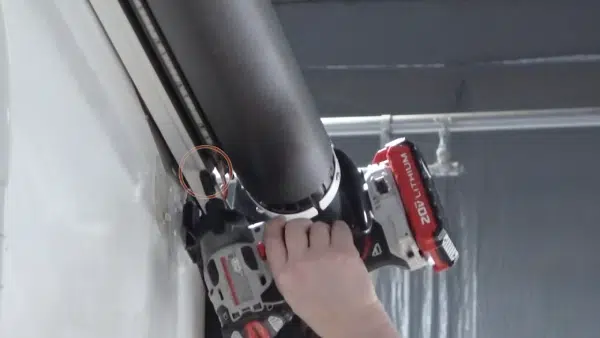
Awning fabric wrinkles on your RV can be a frustrating sight to behold. Not only do they look unsightly, but they can also cause damage to the structure if left unaddressed. Fortunately, there are ways to fix these wrinkles and prevent them from happening.
Adjusting Tension
To adjust the tension, extend the awning fully and inspect it for any signs of sagging or wrinkling. Next, locate the adjustment knobs or screws on your RV’s awning arms. These are usually located near the base of each arm and can be adjusted with a simple tool like a wrench or screwdriver.
Using your tool, turn each knob or screw slowly in a clockwise direction to tighten the fabric and remove any wrinkles or sag. Be sure to make small adjustments at first, as over-tightening can cause damage to both the fabric and hardware.
Once you have made your adjustments, retract and extend your awning a few times to ensure it rolls up smoothly and without any wrinkles. If you still notice some sagging or wrinkling after adjusting the tension, you may need professional help for further repairs.
Replacing Damaged Fabric Sections
Before replacing any sections, it is important to identify the extent of the damage. If only a small area is affected, you may be able to patch it up with a repair kit. However, if the damage is extensive or affects a large portion of the awning, replacement is likely necessary.
To replace the fabric sections, you must measure and order new material that matches your RV’s awning size and style. Once you have received the new material, carefully remove the old fabric from the awning frame and install the new fabric in its place.
It is important to ensure that the new fabric is properly tensioned and secured to prevent future wrinkles and damage. During this process, you can also consider adding additional features such as UV protection or waterproofing.
While replacing damaged fabric sections can be a more costly solution than repairing minor wrinkles, it can ultimately save you money in preventing further damage and maintaining your RV’s resale value.
Seeking Professional Help
If you are experiencing awning fabric wrinkles on your RV, seeking professional help may be best. Professional help can come in many forms, from an experienced RV technician to a specialized awning repair service.
One of the main advantages of seeking professional help is that you can be sure the problem will be addressed correctly and efficiently. A professional will have the necessary tools and expertise to diagnose the issue and provide a solution that fits your specific needs.
Another advantage of seeking professional help is saving you time and money in the long run. Attempting to fix the problem yourself may lead to further damage or even injury if you are unfamiliar with the proper techniques or safety protocols.
Hiring a professional can avoid these risks and ensure your awning fabric is properly repaired.
When choosing a professional to help with your awning fabric wrinkles, it’s important to research and choose someone with experience working with RVs specifically. Look for reviews or recommendations from other RV owners and ask about their qualifications before deciding.
How long does RV awning fabric last?
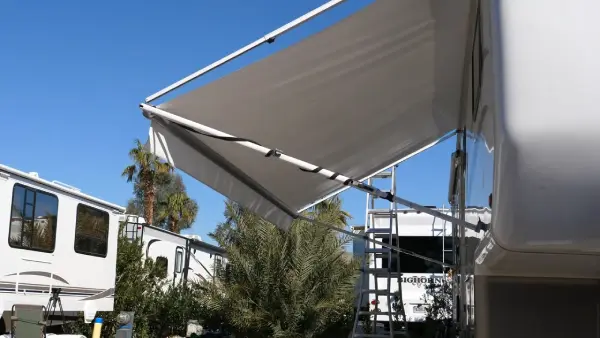
The lifespan of RV awning fabric varies between 5-15 years, depending on various factors such as the material quality, frequency of use, and weather conditions. The most common materials used for RV awning fabric are vinyl and acrylic.
Proper maintenance can help extend the lifespan of the awning fabric. However, signs that indicate the need for replacement include cracks, tears, and excessive wear and tear. The frame and motor of the RV awning can last up to 15 years, and some manufacturers offer a warranty period of 10 years.
Can you leave the RV awning out in the rain?
While leaving the RV awning out in the rain is possible, it is not recommended for prolonged periods. Prolonged moisture exposure can lead to mold and mildew growth, a health hazard.
To prevent this, rolling up the awning only when it is dry is essential. In addition, using “awning bows” can prevent water pooling and wind damage, thereby protecting the awning.
Proper maintenance is necessary to avoid mold and mildew growth, and if necessary, one can learn how to clean the RV awning if mold or mildew does accumulate.
Keep Wrinkles Away & Enjoy RV Benefits
Preventing and addressing awning fabric wrinkles requires understanding the various factors that can cause them. From a lack of tension to aging and exposure to elements, improper storage, and poor installation, there are numerous reasons why your awning fabric may wrinkle.
To prevent them, RV owners must ensure proper tension, store their awnings correctly, maintain regular cleaning, and seek professional installation and repair services.
By taking these measures, you can keep your RV looking its best while also ensuring its safety and longevity. Remember, a little effort in preventing and fixing awning fabric wrinkles today can significantly benefit your RV in the long run.
